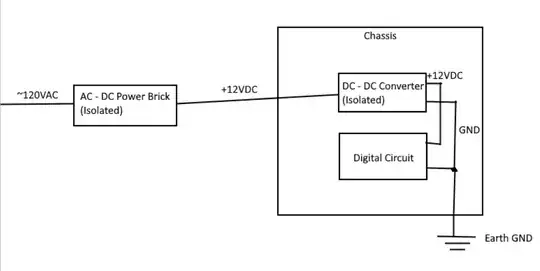I'm very confused about this design i've come across in the field. A data acquisition system is powered by a 12V ACDC power brick. But then inside of the chassis is a DC-DC converter, also isolated, where the output GND is tied to the chassis, and to earth...
Why? There are no high voltage systems here, so I can't imagine this can be for safety. Can earth grounding the common GND of a digital system prevent noise? Is it wise to do this?
Another question I have is whether grounding the output of an isolated converter breaks the isolation of that converter.. In other words, is the output of the converter no longer floating since it's now tied to earth?
